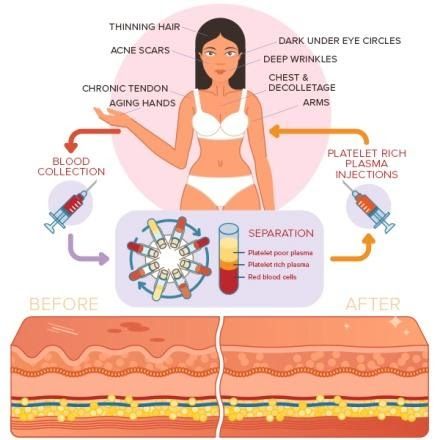One of the most innovative and exciting areas of healthcare is the field of Regenerative medicine, which is the science of using specialized cells to not only reduce inflammation but also actually stimulate tissue healing and regeneration. At Beyer Functional Wellness we’re proud to offer to our patients three of the most innovative and effective regenerative medicine procedures available: Stem Cell Therapy, Platelet Rich Plasma (PRP) Therapy, and Alpha-2-Macroglobulin.
Below is an explanation of each, which will help you better understand which of these Regenerative Medicine options may be right for you.
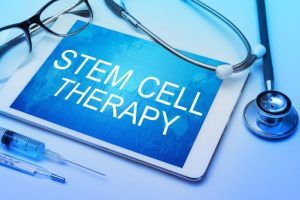
Umbilical Cord Derived Mesenchymal Stem Cells:
Stem cells are specialized cells that are in certain areas of our body (like the bone marrow, and fat), and function to replace damaged cells, reduce inflammation, and regenerate tissue (like cartilage in the joints for ex.). They have the amazing ability to regenerate tissue because they are “undifferentiated” cells with the ability to become various other cell types.
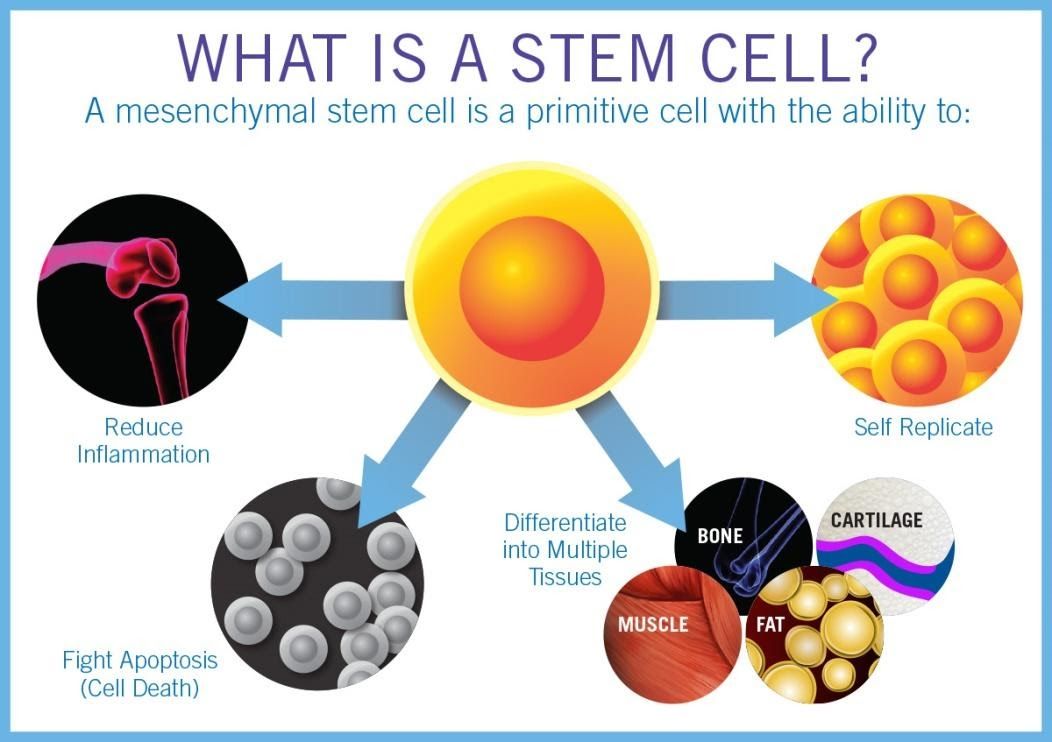
The problem is that the number of our own stem cells not only dramatically declines as we age, but they also lose activity, and have accumulated lifelong cellular damage associated with oxidative stress, radiation, and other toxic exposures. Some doctors still collect stem cells from the patient (“Autologous”) in order to inject them into the area, but this is a more expensive, risky, and uncomfortable procedure than what we use.
All this can be avoided by using mesenchymal stem cells from umbilical cord tissue called “Wharton’s Jelly”. In addition to avoiding the discomfort, risk, and cost involved in an autologous procedure, the benefit of using these “young” stem cells is that they are ALSO more primitive, biologically active stem cells than the ones in our own body. There are none of the risks/expense of surgery, the stem cells are more active, and because the stem cells we use are young and “primitive”, there is no risk of immune reaction or rejection.
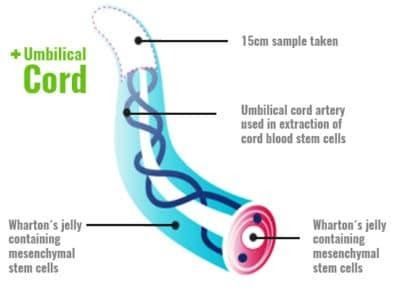
Is The Source of Stem Cells Safe and ethical?
Our suppliers ONLY use tissue from live, healthy U.S.-based donors after elective C-section delivery, and donors are screened and selected based on stringent criteria. Both the birth mother and the donated tissue are exhaustively screened and tested before being accepted. Stem cell therapy using umbilical derived Mesenchymal stem cells is safe, convenient, affordable, and most importantly...super effective!
What Conditions can Stem Cells Help With?
There are many uses for stem cell therapy, but due to the ability of Mesenchymal stem cells to cause tissue regeneration, it’s especially useful for degenerative joint conditions (including arthritis) throughout the body, including of the:
Knees
Shoulders
Elbows
Hips
Ankles
Wrists
Stem Cell therapy can literally be the solution to someone living with chronic pain in these joints, who either doesn’t want, or isn’t a candidate for surgery.
What is an Alpha 2 Macroglobulin (A2M) Injection?
With approximately 30+ million of the Americans suffering from arthritic and degenerative conditions, scientists have found a new biological treatment in the field of regenerative medicine known as Alpha 2 Macroglobulin. While A2M is naturally occurring, it is unable to enter the joints in adults in large enough quantities due to its large size and the avascular structure or these tissues. A2M is a plasma protein and is found in significant quantities in the blood. A2M when concentrated and injected into an arthritic joint is able to inactivate a variety of cytokines and proteinases that are known to cause the degradation of cartilage and pain.
Osteoarthritis (OA) is due to the diseased joint overproducing proteases and cytokines that are trapped in the joint due to their large size and avascular nature. Because they are trapped in the joint, they lead to chronic pain and slowly erode cartilage. By inhibiting these chemicals (cytokines and proteases), A2M can stop the progression of OA by preventing the cartilage from breaking down. This combination may lead to a reversal of joint degeneration and pain that was not available before.
Scientific evidence points to A2M as the key to stopping osteoarthritis and pain at the molecular level.

How does A2M Therapy Work?
At your appointment, your blood will be drawn and spun in a centrifuge to separate and concentrate the A2M. The A2M will then be re-injected into your joint.
The procedure is minimally-invasive, and not painful. Most patients’ symptoms and mobility improve on the very same day.
Treatments may relieve pain, promote tissue growth, and stop the progression of joint degeneration. It may even prevent or limit the onset of post traumatic osteoarthritis.
Who is a Good Candidate for A2M Injections?
Osteoarthritis (Knee arthritis, Hip arthritis)
Joint injuries (Shoulder, Knee, Elbow, Rotator cuff)
Labral Tear
Torn meniscus
Spinal injuries (Neck, Back)
Lumbar and sacral osteoarthritis
Sciatica (Lumbar radiculopathy)
Herniated disc (slipped disc, Disc displacement)
Degenerative disc disease
Neuropathy
Platelet Rich Plasma Therapy (PRP)
The other type of regenerative medicine therapy we offer in our clinic is “PRP”.
PRP therapy is a procedure where blood is drawn from a person, and the Platelets within that blood are isolated and concentrated (the “red” and “white” cells are discarded) in order to be injected back into a site of injury or damage. The platelets are the cells within our blood that have amazing healing capabilities. They stop you from bleeding for example, by releasing certain types of proteins that cause the blood to clot. But they also release MANY other growth factors AND actually attract our bodies’ own Stem cells in order to stimulate the healing of damaged tissues.
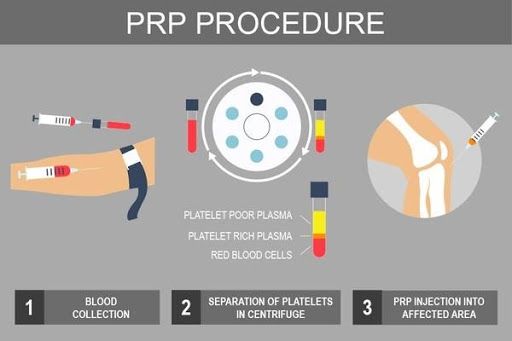
There are, however, a few key factors that determine if a PRP therapy will be successful or not:
1. The Method of Extracting the Platelets and Creating a PRP Therapy Sample. You see, not all methods are of equal value, some only creating a PRP sample that has 1.5-2x the concentration of platelets normally found within our blood. We use top-notch collection/preparation kits that have been shown via scientific studies to consistently produce a PRP sample that has 7-8x the platelet concentration found in our blood! And with PRP, more is better!
2. Using Ultrasound Guidance to Ensure Proper Delivery of PRP Sample. Obviously, if the person injecting the PRP sample (OR the Stem Cells) can actually SEE the needle getting to the right spot, then the odds of successful therapy are significantly increased! But you’d be surprised how many clinics don’t use ultrasound guidance. Suffice it to say, that we use U.S. guidance to ensure the proper delivery of the sample….whether it be PRP or Stem cells.
3. What Type of Condition It’s Used For. While there is some overlap in the conditions that can be treated with PRP and Stem Cell Therapy, generally one is going to be better than another for different issues. We can determine which would be a better option for you with a consultation and exam, but in general, PRP is an excellent option for Tendon and muscle issues (“Runners knee” and “Tennis Elbow”, Achilles tendon injuries, hamstring pulls, and many other athletic injuries).
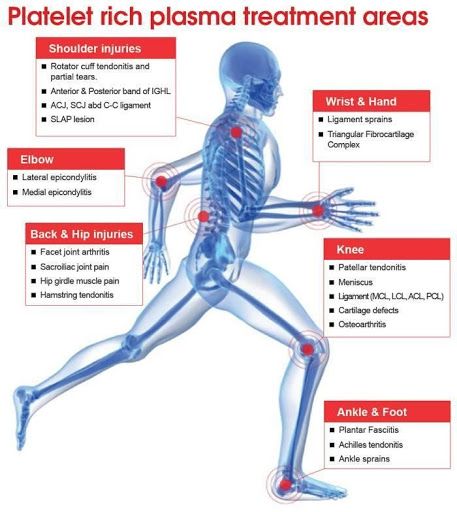
PRP is also used very successfully in the field of aesthetics…facials, hair regrowth, etc…which procedures are also available in our clinic.
